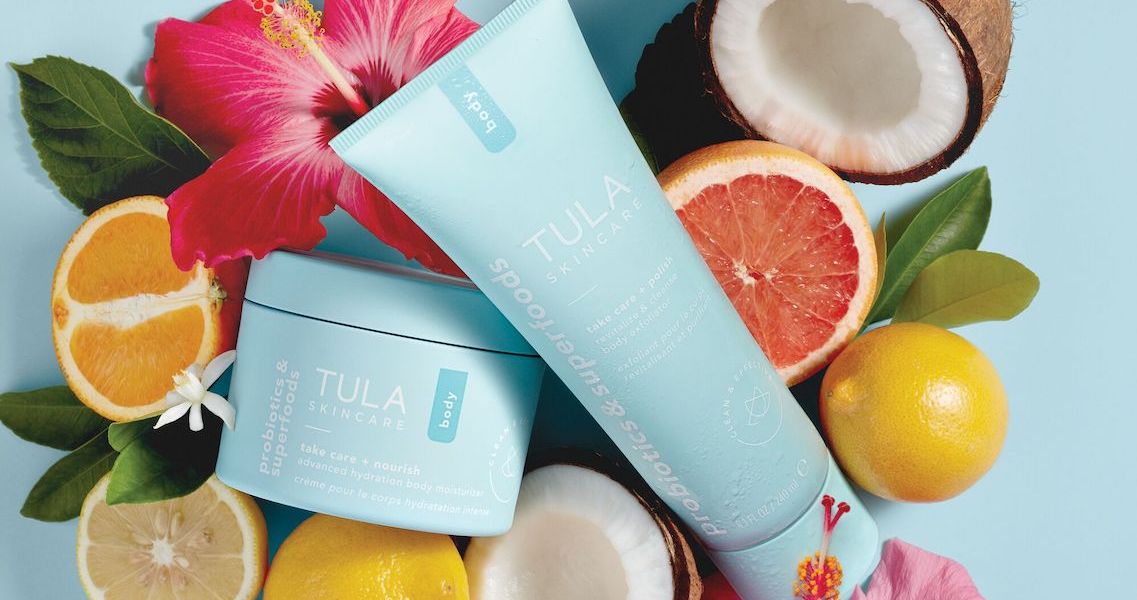The era of testing video content and learning from the findings on TikTok is now maturing into an always-on strategy.
In early April, 8-year-old skin-care brand Tula announced it entered the Canadian market via its DTC e-commerce site, representing its first international DTC expansion. Though Tula is already available in Canada through Sephora, the brand is leaning heavily into TikTok to promote its expansion and raise brand awareness.
TikTok has become the biggest social media platform for the brand since it launched its channel in 2021, amassing over 440,000 followers. The brand has at least doubled its investment this year in TikTok compared to 2021, said Savannah Sachs, CEO of Tula. But Tula’s TikTok strategy to support the expansion is not the typical splashy campaign the beauty industry was known for producing over the last two years. Instead, it is reflective of the brand’s fine-tuning of its TikTok strategy over the last 12 months.
“After prioritizing exploration and follower acquisition on TikTok in 2021, we are working to unlock TikTok as a lower-funnel channel,” said Katey Hassan, vp of brand marketing at Tula. “[This will be done] through continuous audience segment testing, along with developing native TikTok content and partnering with creators for true user-generated and more raw, authentic content. We have learned that performs well for us in this space.”
P&G announced the acquisition of Tula in January. At the time, WWD reported that the brand was on track to earn $150 million in net sales in 2021.
The cross-functional in-house TikTok team is comprised of the paid social, influencer and social media teams, which have worked to develop “edutainment” videos as part of an “always-on” strategy, Sachs said. And to prop up the brand’s foray to Canada, TikTok hired over 75 TikTok and Instagram influencers. Tula can geotarget its videos to Canada through TikTok’s advertising offerings. While splashy largescale TikTok campaigns are still the norm in beauty, brands in every category are now looking to leverage TikTok as part of their core social media strategy with daily or weekly content.
“TikTok is an entertainment platform, not a social platform,” said Sachs. “What that means is that you need to think about how the audience and community are different on TikTok versus Instagram, for example, and what type of content is really going to resonate.”
Ad position: web_incontent_pos1
Specifically, Tula is producing Tula 101 TikTok videos about being a “clean and clinically-effective brand,” videos with founder Dr. Roshini Raj and videos spotlighting product information. Sachs said she sees that TikTok is driving traffic and conversion not only to Tula’s DTC e-commerce site, but also to its brick-and-mortar store partners. Tula is sold in Ulta Beauty and Sephora, among other retailers. The “vast majority” of people coming from TikTok to the brand’s e-commerce are also new customers. Tula tracks the customer journey from TikTok to sales using TikTok-specific discount codes and internet traffic monitoring tools.
Tula also joined TikTok’s shopping pilot program in Sept. 2021. TikTok users can shop the brand when they click on a featured product in an in-app ad that sends them to Tula’s DTC e-commerce site and an auto-populated shopping cart. Sachs declined to share initial results, but called them “promising.”
Being able to attribute sales to TikTok has been both a challenge and an opportunity for beauty brands in the past. TikTok has actively begun offering brands more tools, like livestream shopping, to be able to use the social platform as a sales channel. Instead of testing and learning what content viewers value, the testing is now focused on how to convert eyeballs into clicks and sales. In that respect, TikTok is not the biggest platform Tula invests in but is a top priority, said Sachs.
“Last year was really about growing our community and testing and learning. Now that we’re seeing such incredible potential, we’re starting to think about how TikTok matures and how to drive revenue and e-commerce conversions,” said Sachs. “[There’s] more to come this year, in terms of continuing to lean in on alpha and beta programs that are more focused on seamless shopping and driving to conversion.”




